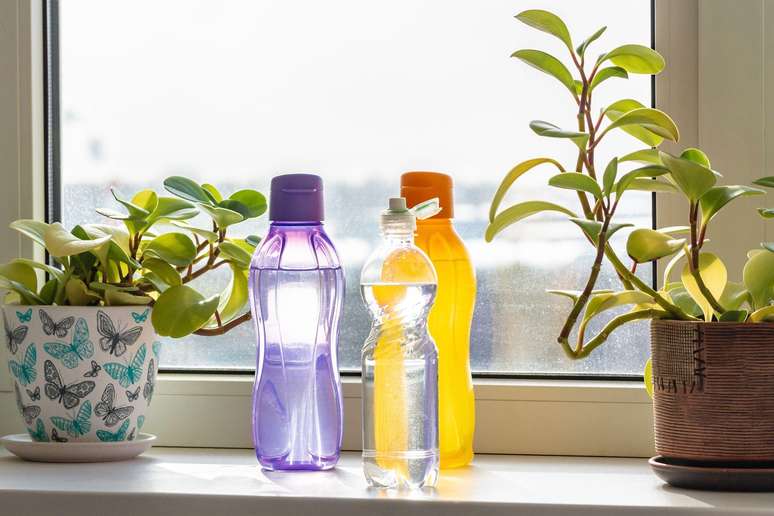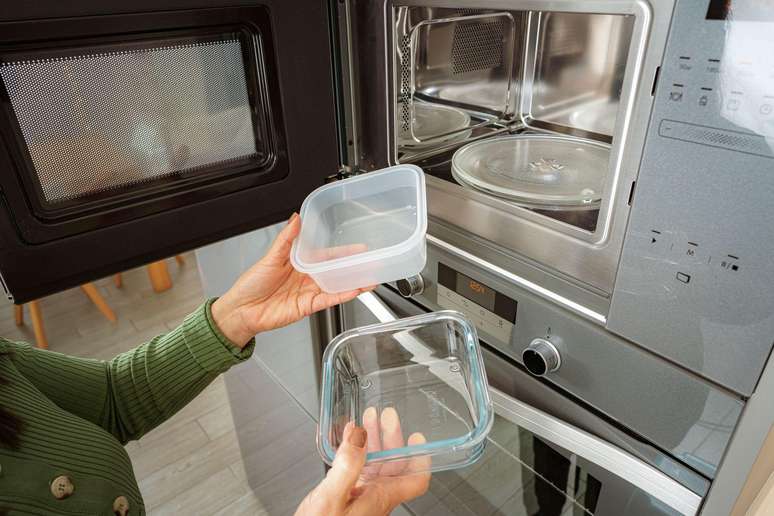Experts warn the risks of endocrine deregulators present in plastic and guide how to reduce contact with these substances in every day
Tax notes, plastic bottles, food cans, children’s toys. BPA, or Bisfenol A, is in products that are part of the routine of almost everyone. This chemical compound is mainly used in the production of plastics and resins, but also appears in the internal packaging of packaging, articles for the home and materials of Antholhammaking.
But what worries researchers and health authorities is that, although so widespread, the BPA is classified as an endocrine deregulation: that is, a substance capable of interfering with the production and action of our body hormones, in particular sexual.
“The main objective of concern is plastic, because its use is enormous all over the world – we are talking about tons per year”, explains Elaine Costa, coordinator of the Sbem (Brazilian Society of Endocrinology and Metabology Society) commission.
“Bisfenol A is essential in the production of many of these materials. It is like building a wall: BPA would be in bricks and chemical bonds, the cement that keeps everything together. When he warming a plastic container with food, these connections can also break, releasing the bisifenol on food. This is the main shape of contamination. And the problem does not stop there: these plastic ends and even the rivers and the rivers.”
In the case of thermal paper, such as tax notes, the BPA can be absorbed by the skin, especially in those who frequently manage this type of material, such as trade workers.
Although the absorption is considered small, studies indicate that constant exposure, even in small doses, can cause long -term risks. And not only for those who have direct contact with the substance: according to Costa, there is evidence that the effects can be transmitted to the next generations through epigenetic changes.
Risks caused by BPA: what science shows
There is no doubt that the bisfenol is not completely harmless, but science cannot yet determine with precision which level of exposure represents a concrete risk to human health.
“In humans, we have not been able to directly demonstrate the risks. You cannot do a study by dividing the people between the complaint and not exposed – it would be non -ethical”, explains the endocrinologist Elaine Costa. “What we have are epidemiological studies that show that the most exposed populations develop some pathologies. In animals they are already demonstrated: changes in fertility, obesity, diabetes.”
These effects are partially explained by the chemical structure of BPA, very similar to that of extreme, the main female sex hormone. Therefore, it can connect with the same receptors of the body, interfering with the action of natural hormones. “It is like a false key that enters the wrong lock, preventing the real from working”, compares Costa. In addition to sex hormones, Bisfenol also affects other cellular mechanisms, with a potential impact on thyroid, metabolism and reproductive system as a whole.
Professor Márcia Mendonça, owner of Gynecology at UFMG, underlines that compounds how BPA can exercise estrogen or anthrogenic action, interfering with the delicate balance of the hormonal system. Studies with animals already indicate deleterious and evidence collected in different countries show that exposure to these compounds is related to the reduction of the quality of the sperm, a greater impact of genital anomalies in men, changes in the menstrual cycle, polycystic ovary syndrome, endometriosis and even some channels.

The World Health Organization (WHO) recognizes about 800 chemical compounds suspected to interfere with the hormonal system, including BPA. However, he underlines that only a small part has actually been studied in depth and that the scarcity of data generates “uncertainties about the extension of risks”.
Anvisa itself recognizes this scenario of uncertainty. According to the agency, conventional toxicity studies indicate only effects on high doses. However, some studies suggest that lower doses of BPA can also be associated with emerging results such as changes in neurological development, changes in the breast and prostate rat glands, as well as damage to the quality of the sperm. Since there are still doubts about the validity and relevance of these results, the experts warn that, although the data are not concluded, new research and precautionary policies should guide.
“I often say that the absence of evidence is not a proof of the absence. So if we know we can provoke, we must prevent,” says Elaine Costa.
How to protect you from BPA on a daily basis
Although there are still no rigid control policies, some attitudes can help reduce the exposure to bisifenol A (BPA) and other similar compounds – such as BPS (Bisfenol S, a chemical used as a substitute for the BPA, but with similar hormonal effects).
Endocrinologist Elaine Costa explains that it is already possible to detect the presence of these substances in the body – through urine, saliva and other liquids of the body – but these tests are limited to research workshops, as they depend on highly firmness equipment such as mass spectrometry.
For her, the ideal scenario would be a more rigid legislation, with a strong control of human exposure. “I believe that the migration limit for food should be zero, because we are already exposed to different endocrine deregulators in the air, water, food, paper, domestic objects,” he says.
It also supports further research to develop truly safe plastics for human health.

In everyday life, some measures can help. The main orientation is to avoid the use of plastic materials to preserve or heat food and give preference to the glass containers. It is also important to observe whether children’s toys and utensils have the seal “without bisphenol”.
However, caution is needed: “Bispenol is generally replaced by variants such as the bisfenol S or F, which also have similar activities. It is not identical, but it is similar. So it cannot be said that” the bisphenol is not free“It’s totally safe,” warns the doctor.
It also recommends avoiding canned foods, since the internal coating of cans usually contain bisfenol – and acid foods, such as tomato extract, can speed up the release of the substance. “What we can do is minimize exposure as much as possible,” he concludes.
Source: Terra
Ben Stock is a lifestyle journalist and author at Gossipify. He writes about topics such as health, wellness, travel, food and home decor. He provides practical advice and inspiration to improve well-being, keeps readers up to date with latest lifestyle news and trends, known for his engaging writing style, in-depth analysis and unique perspectives.







